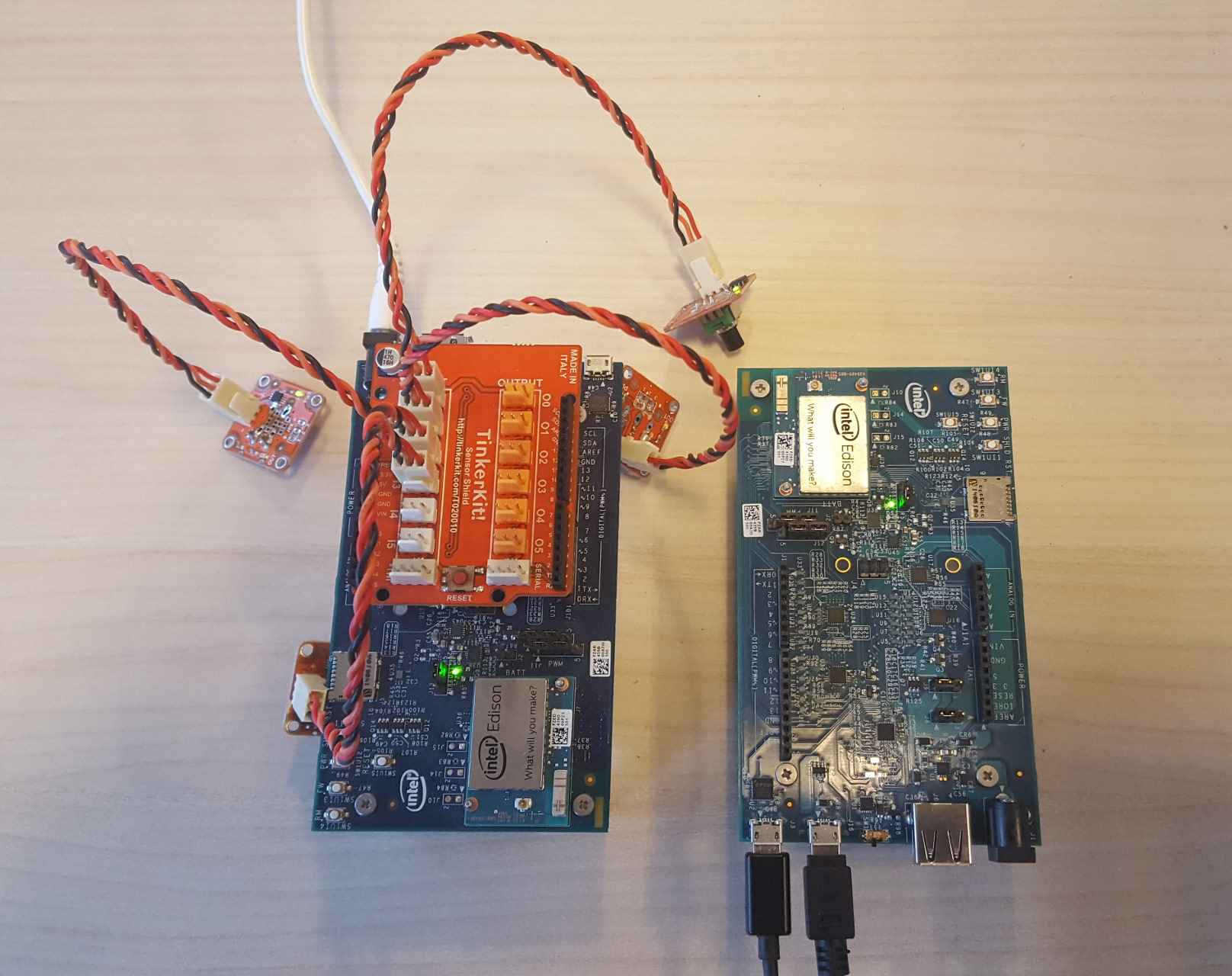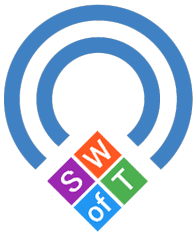
Physical Semantic Web
Demo @TheWebConf2018
A simple scenario about wine discovery will be described to better explain the proposed Physical Semantic Web (PSW) approach.
HTML5 Presentation
Reference environment
A winery proposes to its customers different types of wine. Each bottle exposes by means of a beacon (PS or PSW) a description containing the main characteristics of the wine. Descriptions advertised by PSW beacons can be changed to simulate variations in environmental parameters detected by embedded sensors. In particular, in the proposed scenarios the following beacons will be used:
- Basic Physical Web beacons: exposing a URL pointing to an HTML web page ;
- PSW-URL beacons: containing a URL pointing to a semantic annotation in OWL (Web Ontology Language) on the Web;
- PSW-UID beacons: reuse the fields of an Eddystone-UID beacon to retrieve a semantic annotation from a local device by means of a peer-to-peer connection.
The proposed scenario shows the evolution from the PW to the PSW in a four-step experience.
Stage 1: Physical Web
A customer is looking for a wine. He activates Bluetooth on his smartphone and starts the Find My Wine! Android application (Fig. 1) to find the exposed beacons. Detected ads are listed in a simple result screen as shown in Fig. 2. At this stage, only the two Physical Web beacons are visible in the winery exposing an URL to the specific wine Web pages. List items are ordered according to their physical distance from the user. For each beacon, the app can retrieve some basic metadata (e.g., title, description as shown in Fig. 3) or open the advertised Web page in the browser (Fig. 4).
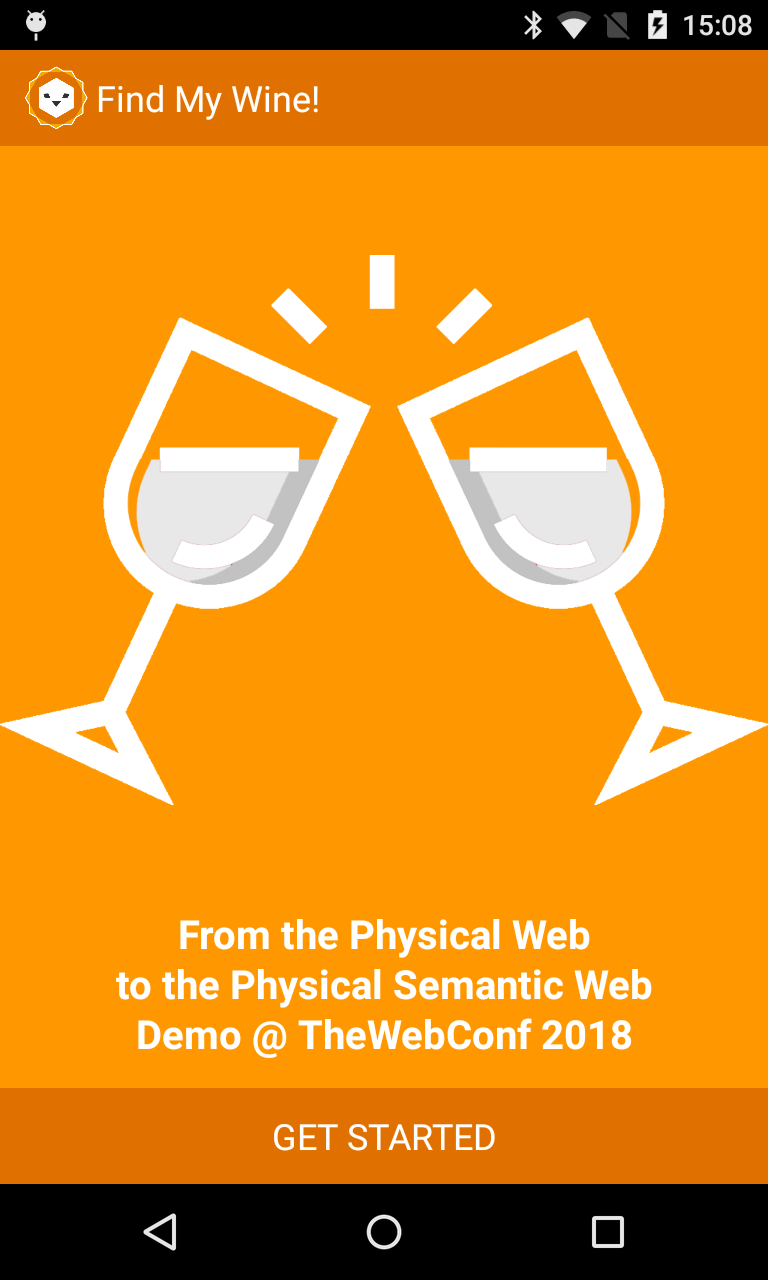
Fig. 1 - Main Screen
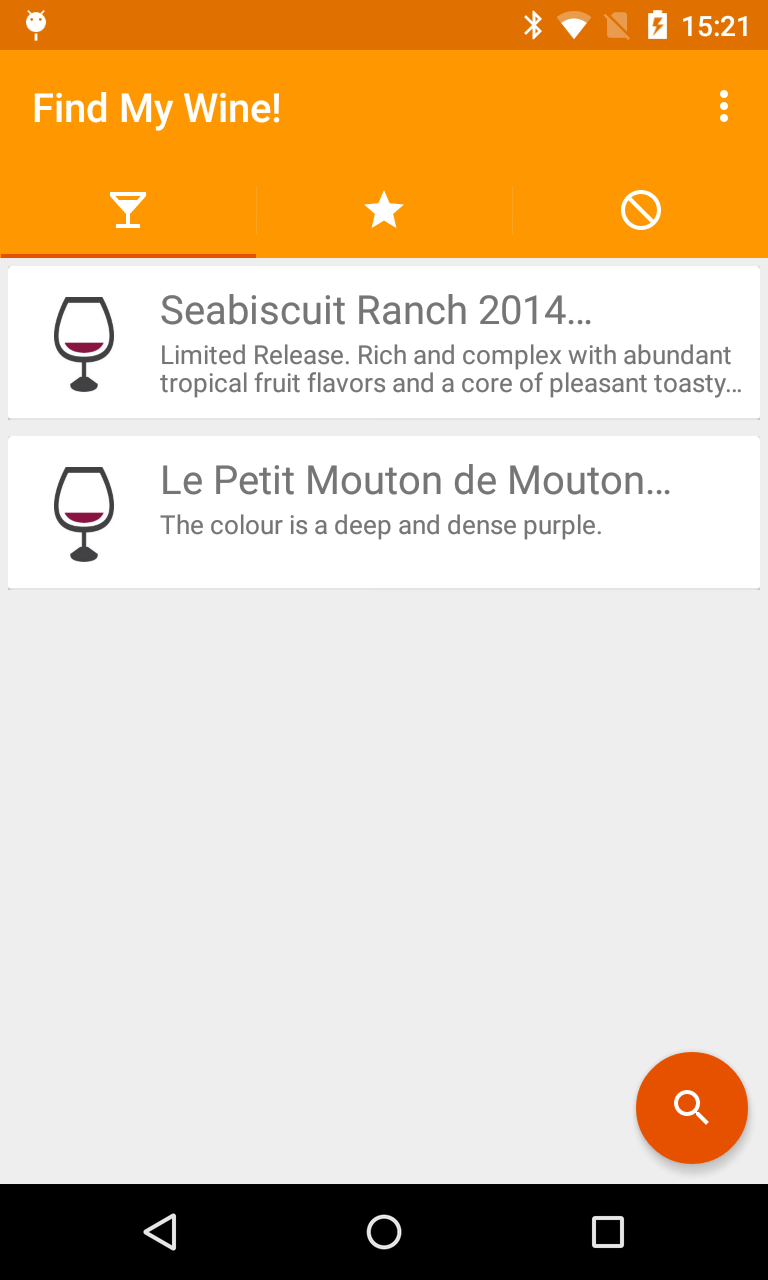
Fig. 2 - Beacons List
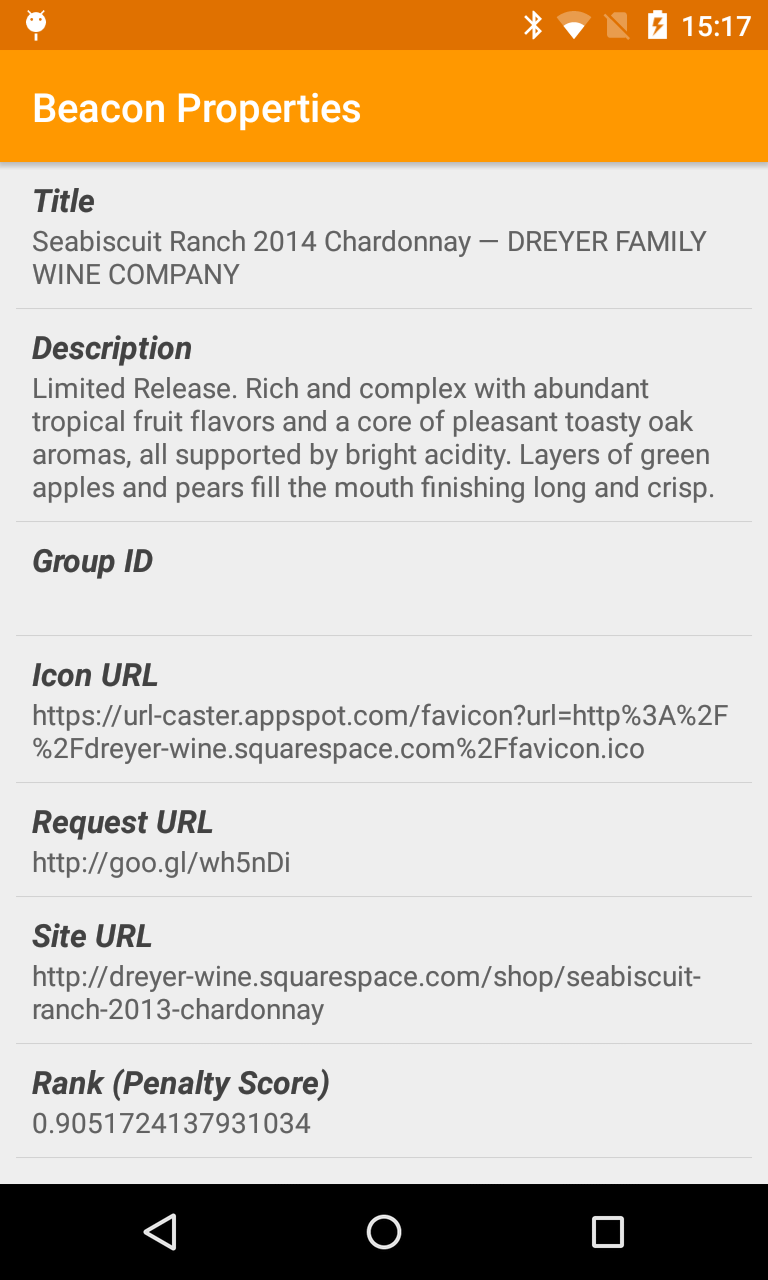
Fig. 3 - Beacon Info
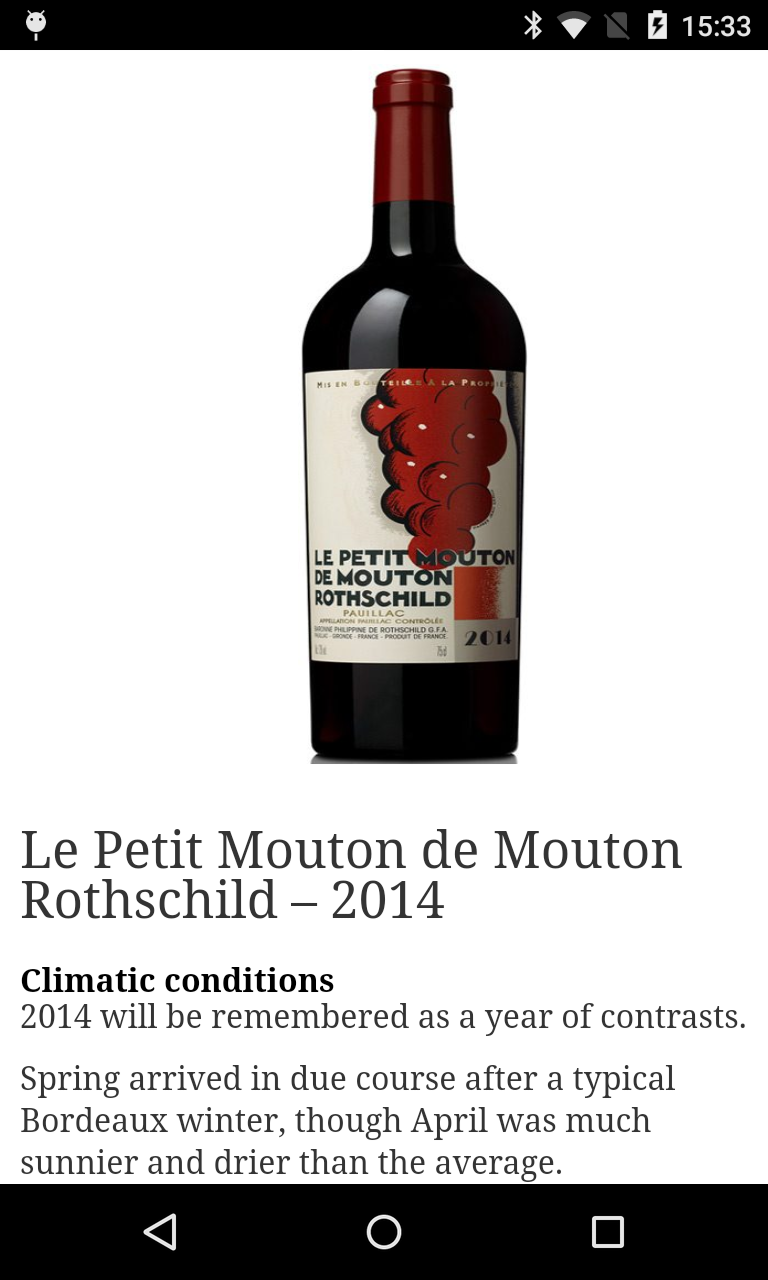
Fig. 4 - Open URL
Stage 2: Physical Semantic Web
The user can enable the Physical Semantic Web option from the settings screen in Fig. 5 to perform a more accurate and flexible resource discovery. The customer, exploiting a graphical editor of OWL annotations embedded into the app, can compose an OWL request. An editor panel materializes to:
- navigate the reference taxonomy describing main wine features (e.g., wine colors in Fig. 6);
- show both class and object property hierarchy;
- create a request selecting basic OWL expressions (Fig. 7).
In addition to the previuos wines, three PSW beacons are now detected corresponding to the following wines: Mountadam Pinot Noir, Chateau Morgon Beaujolais, Forman Cabernet Sauvignon. In this case, each PSW-URL beacon exposes an URL used to download an OWL description from the web.
It contains both a description of the wine and information about the conservation status of the bottle in terms of environmental conditions not respected during its lifetime (e.g., too high temperature or humidity).
In case of PSW-UID beacon, the user device retrieves the resource description through a peer-to-peer conncection (e.g., Bluetooth).
User mobile device embeds a semantic matchmaking engine, which allows to match and rank retrieved annotations in relevance order w.r.t the user request by means of a semantic-based utility function.
As reported in Fig. 8, Mountadam Pinot Noir obtains the highest rank because it covers all features specified by the user.
Chateau Morgon Beaujolais and Forman Cabernet Sauvignon obtain a lower score because they cover the request partially and
also contain inappropriate features.
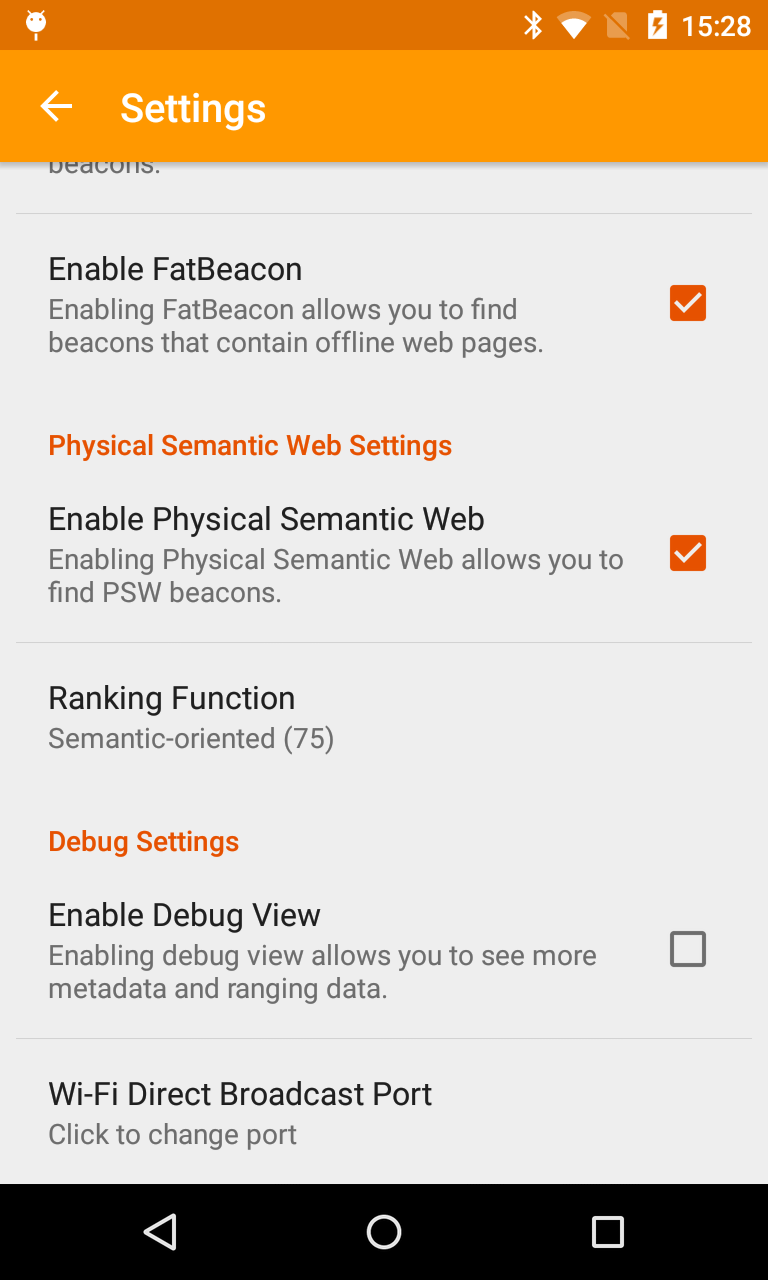
Fig. 5 - Settings
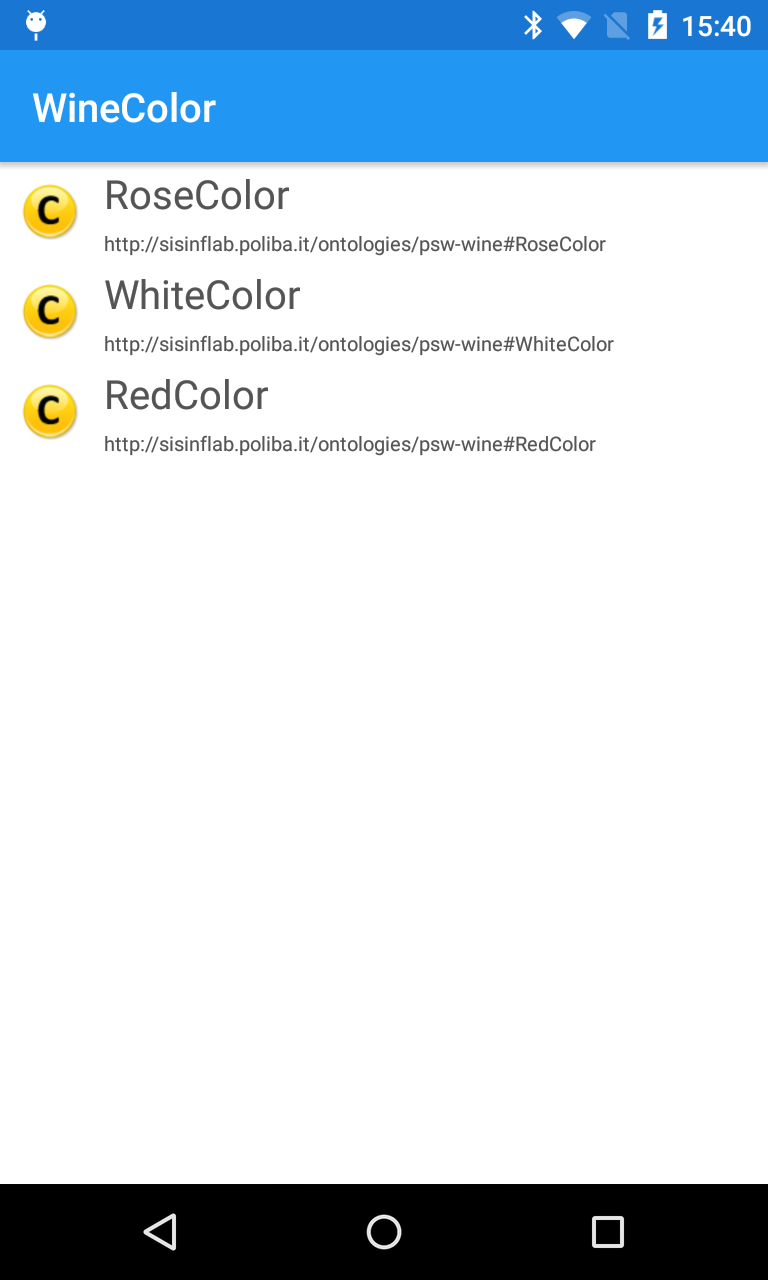
Fig. 6 - Wine Colors
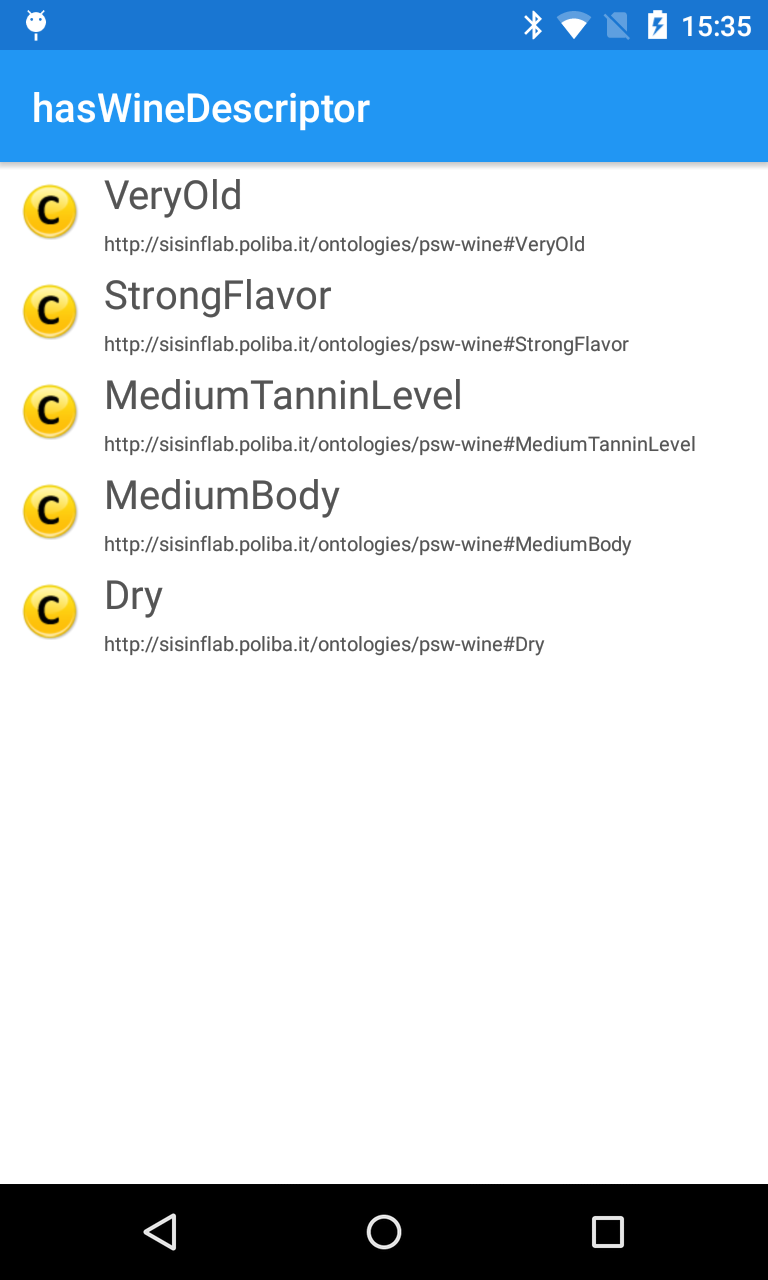
Fig. 7 - Wine Features
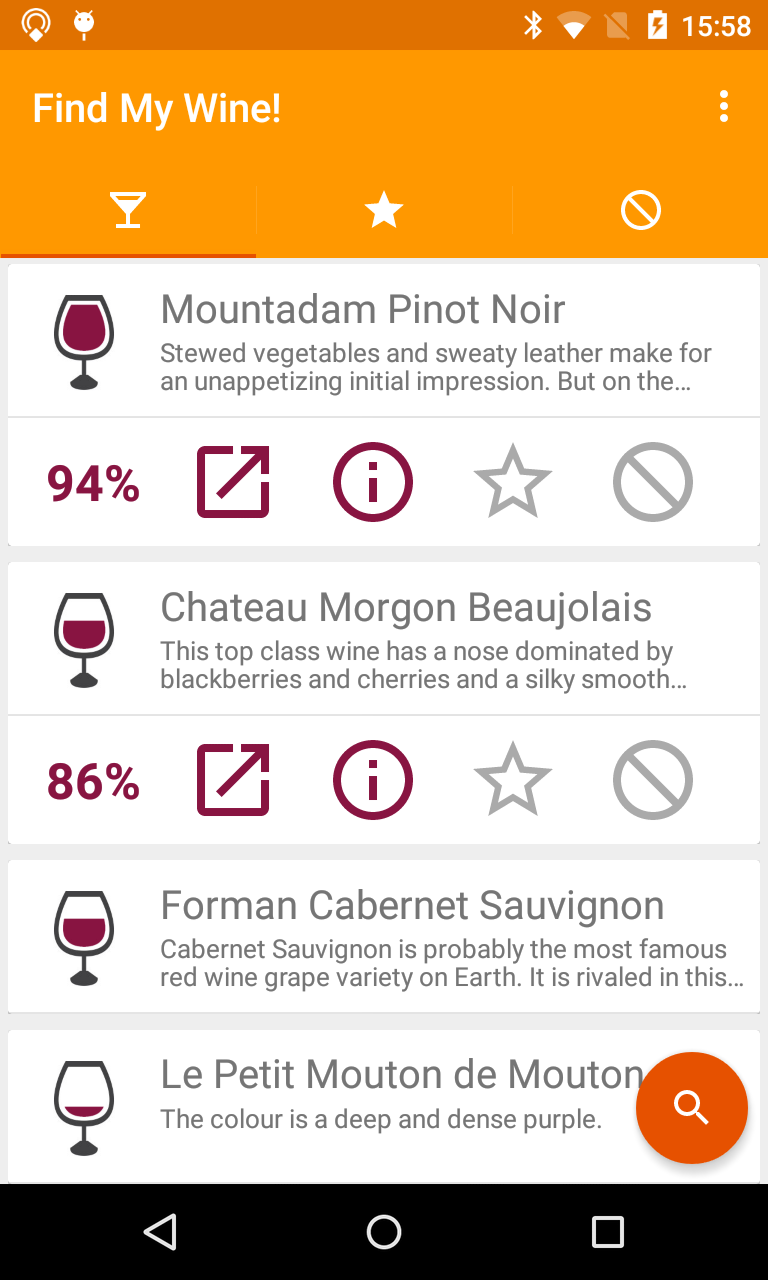
Fig. 8 - PSW Discovery
With a basic syntactic match, all beacons would have the same score. Instead using a semantic-based rank and modelling the reference knowledge base properly, it is possible to
highlight discrepancies between descriptions.
Selecting a beacon, the user can open in the browser the related web page or (only for PSW devices, Fig. 9) show the exposed OWL annotation (Fig. 10) and the matchmaking outcome explanation. In the last case, the user can navigate missing and incompatible features between the wine annotation and the user request (Fig. 11-12).
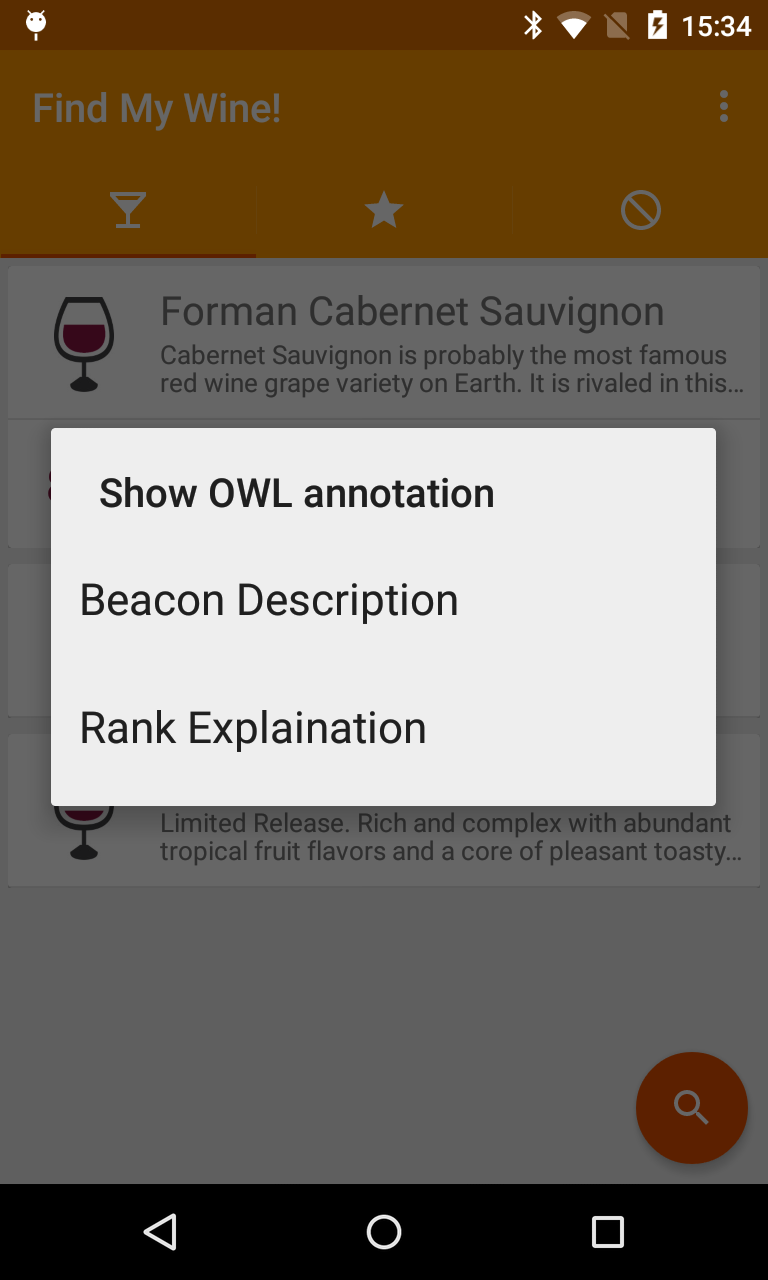
Fig. 9 - PSW options
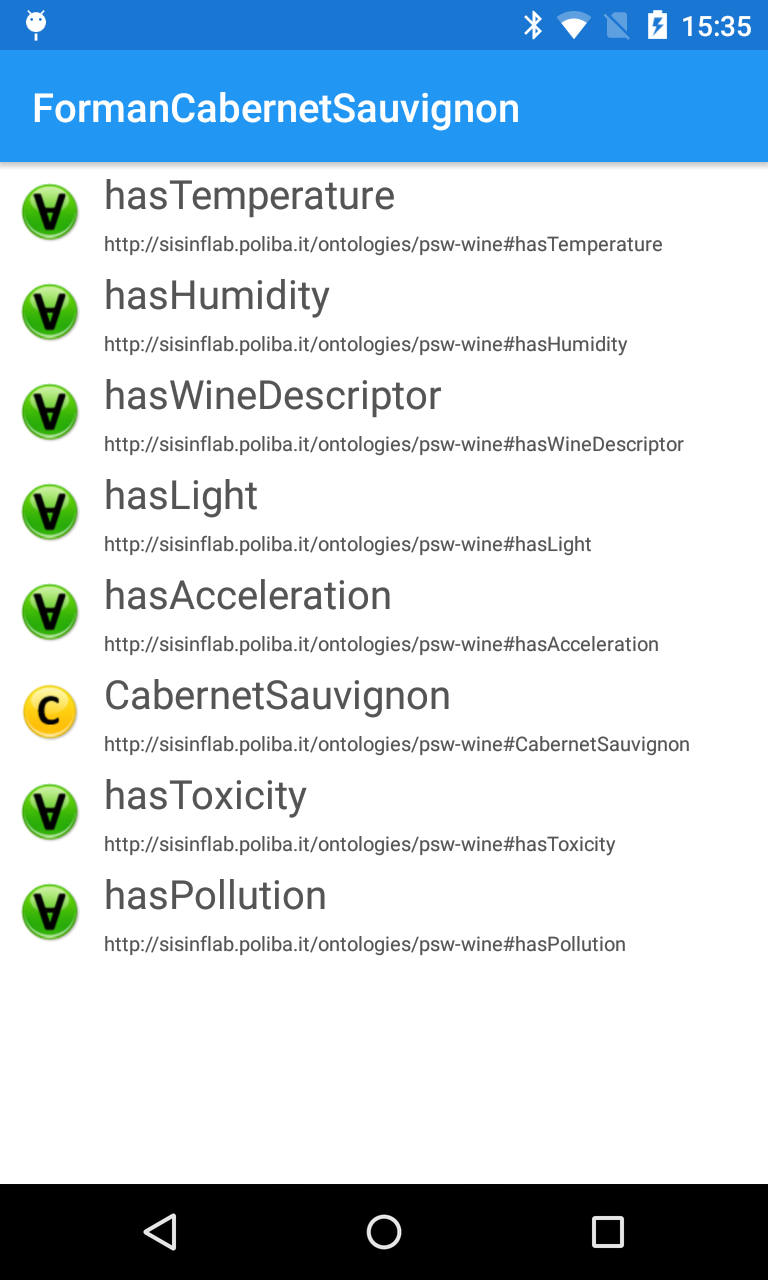
Fig. 10 - Beacon Annotation
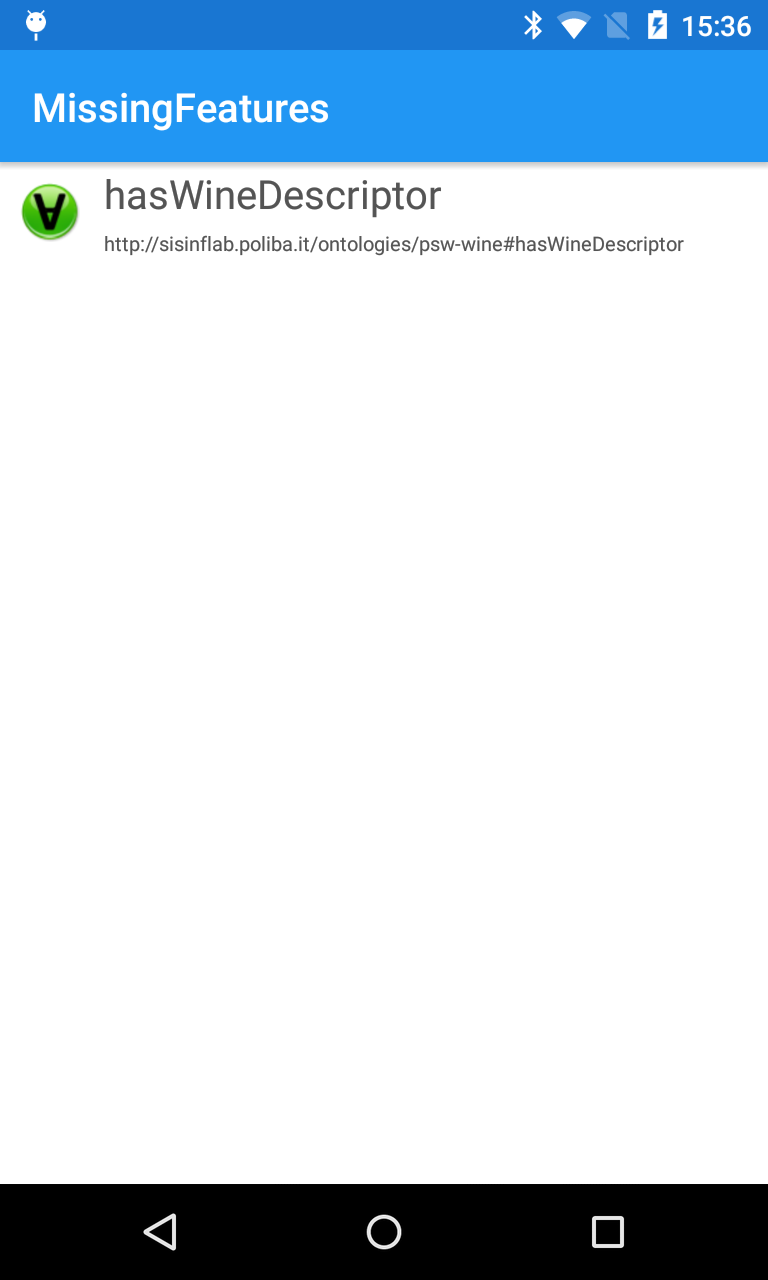
Fig. 11 - Missing Features
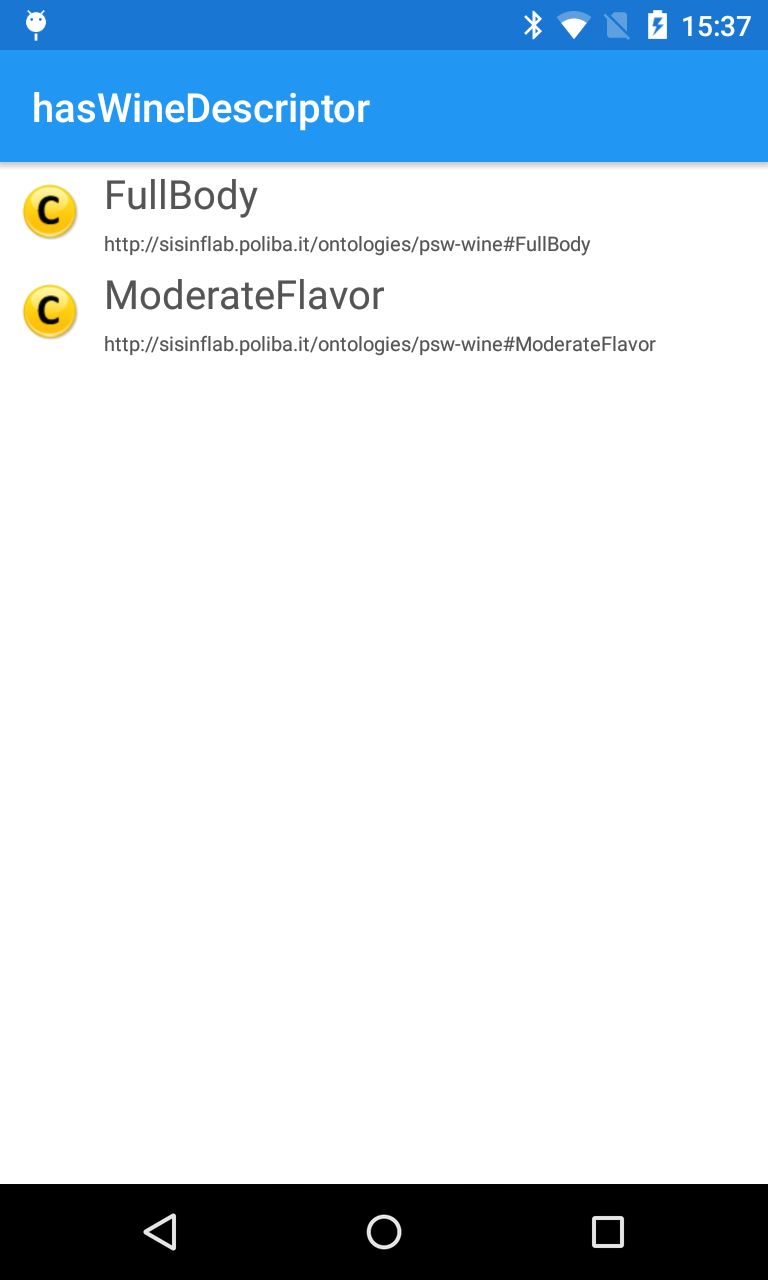
Fig. 12 - Explanation Details
Stage 3: Advanced PSW features
PSW supports OWL annotations exposed by beacons changing dynamically due to events whitin the object or the context. Let us suppose that Mountadam Pinot Noir was left for some minutes in an a place with a very low temperature, very high humidity and high luminosity. Due to this reason, the quality of the wine decreases.
The related description is updated and exposed by the beacon. When the app starts a new discovery round, degradation of Mountadam Pinot Noir will be detected, leading to a lower final rank (shown in Fig. 13) than before.
The mobile app also creates an history of visited beacons when the user opens URLs or shows retrieved OWL annotations. Moreover, the user can mark one or more beacons as favorite (i.e., useful - Fig. 14) or spam (i.e., unuseful or unwanted - Fig. 15).
In subsequent discovery procedures, the rank of such beacons will be respectively increased or decreased.
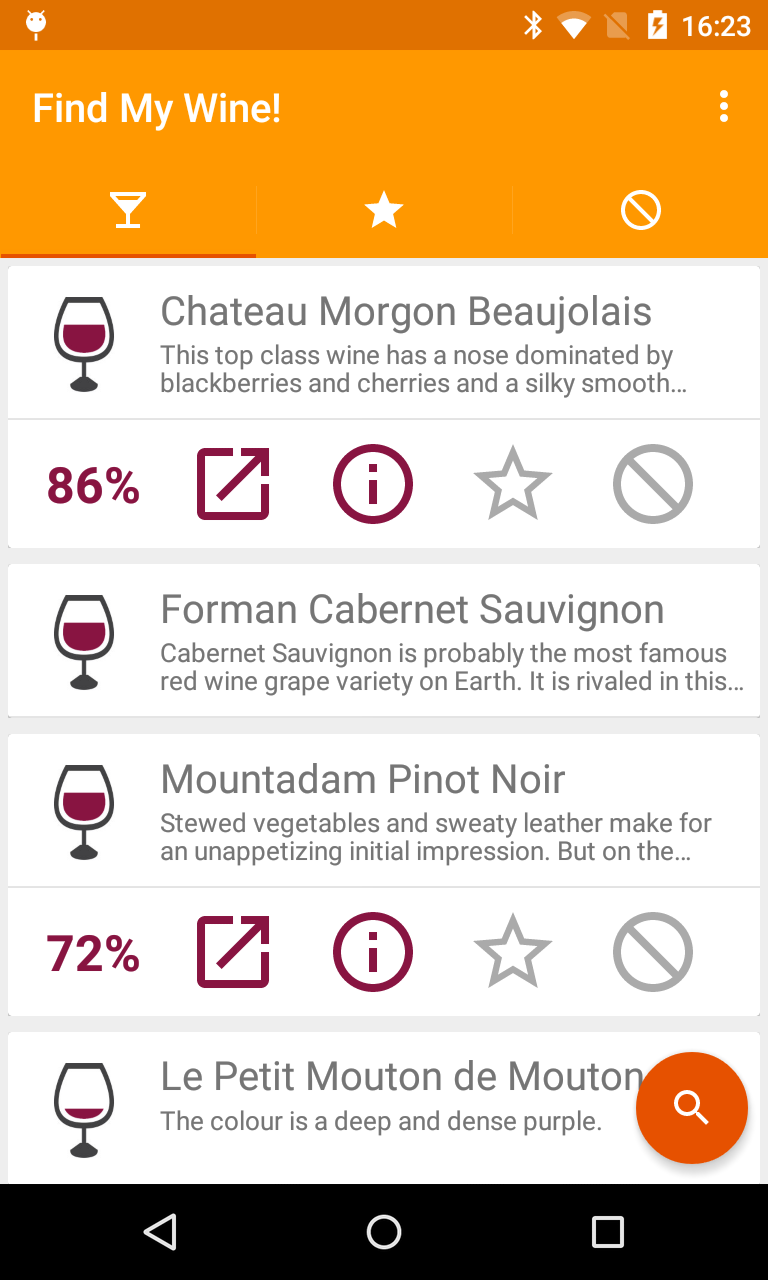
Fig. 13 - Updated annotation

Fig. 14 - Favorite beacons
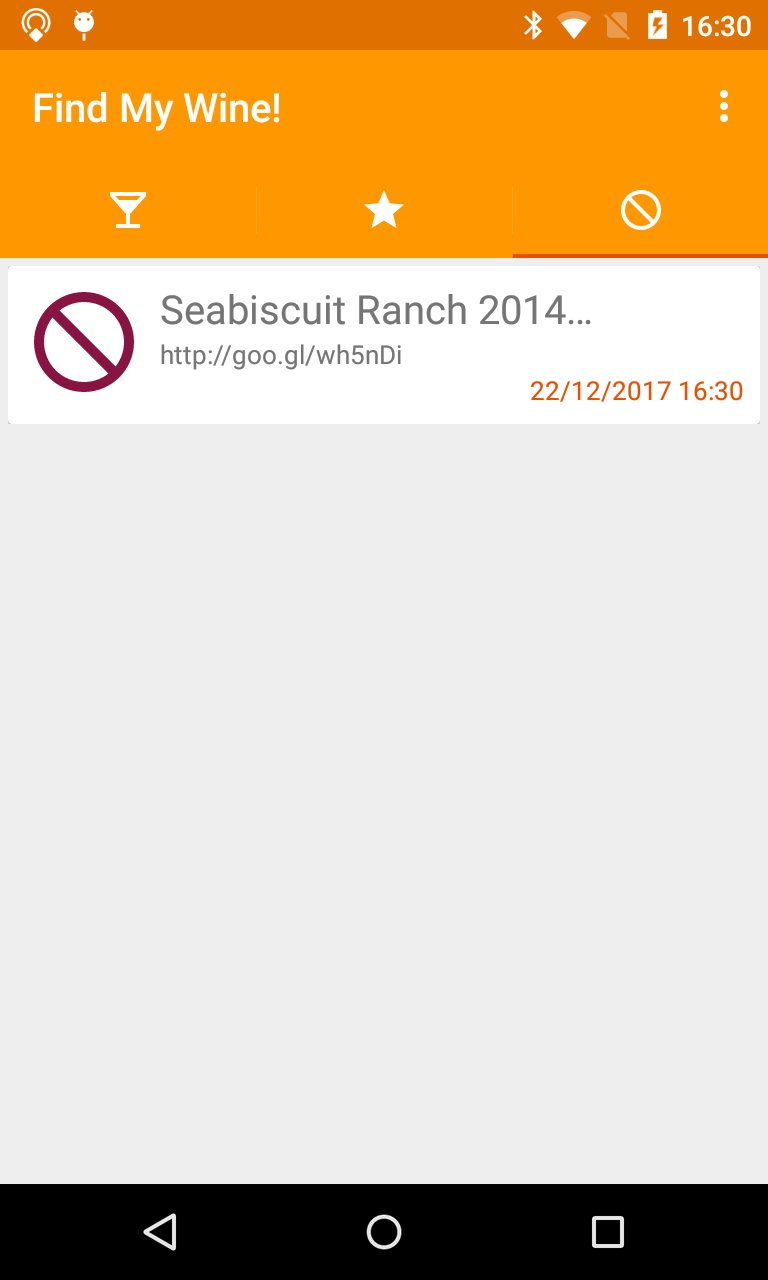
Fig. 15 - Spam beacons
Stage 4: Infrastructureless PSW
During the dinner, no phone networks signal or Wi-Fi Internet connection is available in the winery.
In the Physical Web, a connection is always required to retrieve data from the web.
In the PSW, exploiting Eddystone-UID frames, knowledge exchange can also occur through point-to-point connectivity.
The demo video highlights that all PSW features are available even when Wi-Fi and cellular data netvorks are switched off on the smartphone.
Furthermore, PSW allows chaching OWL annotations retrieved from detected objects for a limited time.
Beacon advertising: Hardware & Software
- Physical Web beacons were advertised exploiting two Bluvision BEEKs Lite devices.
- Physical Semantic Web beacons were exposed through two Intel Edison boards running the PSW-toolkit framework. Sensor data are collected by means of an Arduino TinkerKit Sensor Shield connected to Intel Edison.
- The PSW Android app was tested on a Google LG Nexus 4 with Android 5.1.1 OS.
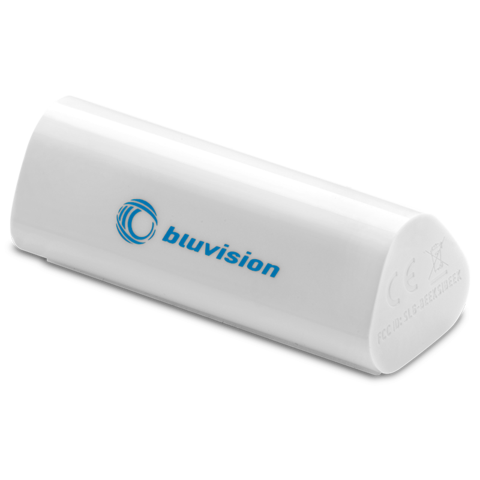
BEEKs Lite beacon
